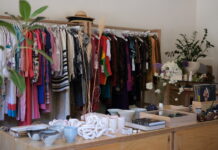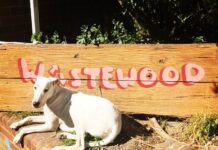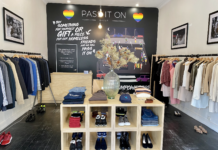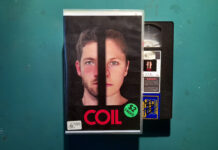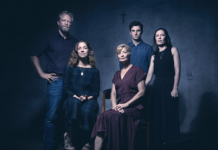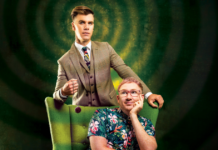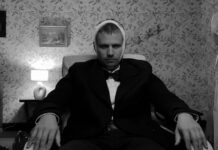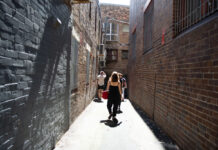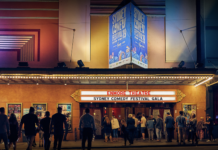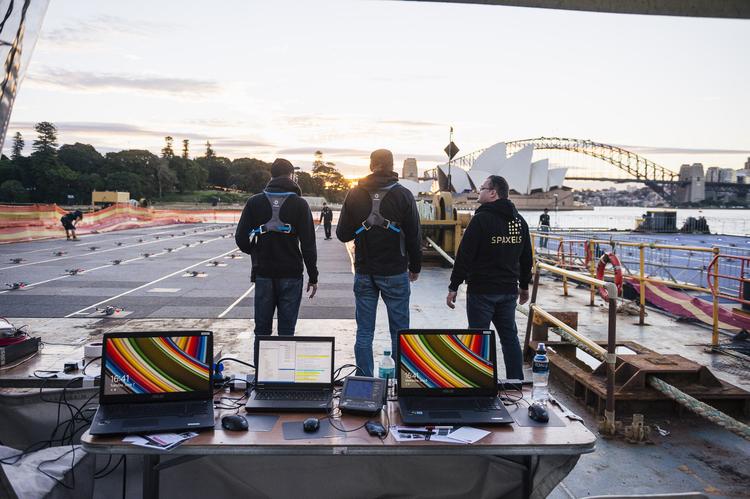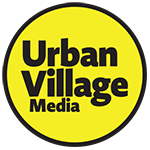Arts contributor Angela Stretch picks out some highlights from what is on offer at Sydney galleries.
Everything influences everything else when creating a true image. We somehow make sense of colour as a perceptual truth. When a colour is absent from a language, it is usually blue. Koori people, ancient Hebrew, Welsh, Vietnamese and in more recent times Japanese, lack a word for blue. There are no known local sources of blue pigment minerals. The Icelandic word for blue and black is the same, one word that fits sea, lava and raven. Within every colour lies a story that binds an agent of culture.
Colour perception was tested in 2015, when a social media meltdown over the disagreement of how people saw the colour of a dress in a photograph posted on Tumblr. The dispute centred on the uncertainty of the authenticity of colours, which were later confirmed to be blue and black. The phenomenon prompted the scientific community to investigate insights into human colour vision.
A wearable textile made from cotton integrated with luminescent fibres that can be used like a screen to display simple images has been developed by researchers in China. The electronic fabric is breathable, flexible and can withstand multiple cycles of washing. Published in Nature, glowing points have the potential to be used to enhance communications and researchers anticipate ‘will shape the next generation of electronics.’
Woven fibre materials as a counterpoint lineage is present in the commissioned video work, Labours for colour, by Leyla Stevens. The moving image is screening at the Mosman Art Gallery, in a presentation of Southeast Asian textiles and artefacts, with documentation from the Balinese island Nusa Penida. Upacara: Ceremonial art from South Asia compiles objects from the collection of Dr John Yu AC and Dr George Soutter, and Stevens invites a consideration of the many hands that touch and shape the disparate places and ritualised processes that is undertaken to produce the cepuk style of weaving the island is known for.
Pixel elements work towards creating a whole image to illuminate the fortitude of union. For over 40 years, the Pantone Colour System has been providing a trend forecast. Ultimate Gray is this year’s foundation displaying: ‘A marriage of colour conveying a message of strength and hopefulness that is both enduring and uplifting.
Gunpowder is on the outer with global trends and an environmental alternative to fireworks has us looking upwards to the bright-animated pixel art of drone light shows. Vivid Sydney staged a presentation of 100 flying drones in a silhouette of the Opera House hovering above the Sydney Harbour in 2016, but regulatory barriers and high costs have slowed their use. The devastating Black Summer has added to the momentum for change to the annual New Year’s Eve tradition of sparking-up. Last year a display of 3,051 airborne drones in China set a world record. The bedazzling choreography was coordinated to fly in preset patterns with the colour of each line of dots changing orientation to 3D effect. President Biden used unmanned aerial vehicles at his victory speech. The pyrotechnics of sight, sound and smell with pollution and debris has perhaps met its match.
‘Light is colour, colour is light. It is a material in the same way as paint in terms of colour,’ says Bill Culbert.
Culbert explores moments of illumination, where what we see and we know collide. He engagingly would reinvent new imaginative possibilities for ordinary things, revelations of the secret lives of familiar things.
These objects complicate the distinction between what is lit and what lights. They make a connection between something that is different from everyday life and something that is part of it. His work functions like a continuous experiment in observation, recreating optical discoveries of science as art.

This is the first posthumous exhibition of the New Zealand born artist who died 2019. The exhibition at Roslyn Oxley Gallery reunites us with the demi-john objects of his affection with fluorescent tubes, repurposed and reused materials in poetic compositions that use light and dark by their measured opposites in his sculptural installation work. His work connects the viewer towards an unforgettable resonance of spirit characters providing an unforgettable moment of illumination.
Such philosophical notions of the spirit have been evolved by 19th century Swedish artist Hilma af Klint. Her emblematic paintings unite darkness and light, spirit and matter, male and female. She explored dualities, but unity was her genius. Producing abstract work from a symbolic lexicon of colour and shapes to make visible her curiosity of the natural sciences, the cosmos and spiritualism. Blue was next to darkness; yellow and roses represented masculinity; spirals for unity; U and W shapes for the spirit world and matter.
In the survey exhibition The Secret Paintings, at AGNSW, 120 works display her belief that her paintings contained messages for humanity communicated to her through visions she received from spirits.
Independent curator, Sue Cramer, brings to our attention achievements in developments of balance between two sexes in The Paintings for the Temple (1906-1915), in which inspired the title of the exhibition. “To our present-day eyes, af Klint’s use of prismatic colour foreshadows our own ideas of the gender spectrum, and the rainbow as an emblem of diversity and inclusion.”
In her sixties, Klint relinquished the analytical language of geometry and occult colours for the insubstantiality of which connects all of nature producing watercolours with the idea that plants have souls. She shared Rudolf Steiner’s view of colour as something that uplifts the human being from the material to the spiritual.
When we understand invisible connections between things and realise this in our consciousness while seeking unity with each and everything we may find truth. What juxtapositions of these artworks instill most are the long forlorn connections among theme, among us, and among our cultures. Finding commonality is an altogether notion different from that of homogeneity.
Bill Culbert
Roslyn Oxley Gallery, 17 July 2021
Hilma af Klint: The Secret Paintings
AGNSW, 19 September 2021
Leyla Stevens: Labours for colour
Mosman Art Gallery, 29 August 2021 – 14 August 2021, 2pm: In conversation event with Stevens
Images credits
Bill Culbert, Strait (Yellow Blue Grey Green Blue Orange), 2015, fluorescent light, plastic bottles, 31 x 120 x 12 cm. Credit, Roslyn Oxley Gallery
Intel prepares for 100 Drones at Vivid Festival 2016. Credit, Chris Player ARN

